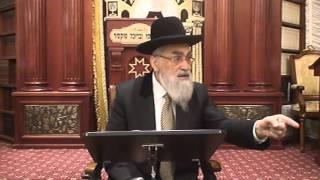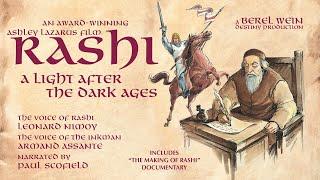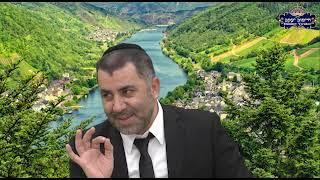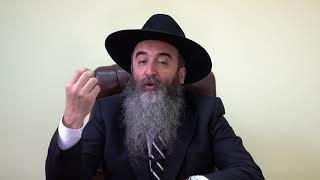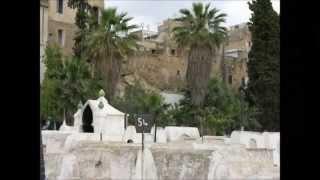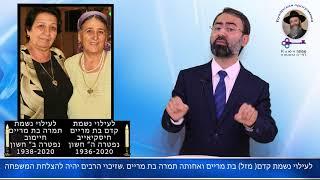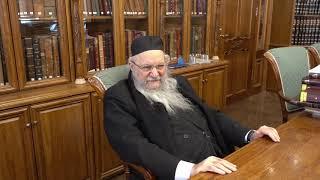Problems playing the video? Click Here to reload
Watch Videos: Random | New | Popular
All Essays | Report Video
|
Share Video
- Buy Us a Coffee -
Rabbi YY Jacobson
G-d Dwells in the Home We Construct from our Real Lives; The Secret Behind the Golden Calf
For Source Sheets: http://www.theyeshiva.net/jewish/2350
There is something very intriguing about Vaykhel-Pekudei. Anybody even slightly familiar with the Torah is aware of its unique conciseness. Complete sagas, rich, complex and profound, are often depicted in a few short biblical verses. Each word in the Bible literally contains layers upon layers of interpretation. For the sages and rabbis over the past 3,000 years, it was clear that there is nary a superfluous word or letter in the Bible, and large sections of the Talmud are based on this premise. If a verse is lyrically repetitive, if two words are used where one would suffice or a longer word is used when a shorter word would suffice, there is a message here, a new concept, another law. It is thus astonishing to observe that two entire sections in the Torah are seemingly superfluous! These are the final two sections of the book of Exodus—Vayakhel and Pekudei—telling the story of how the Jewish people constructed the portable Tabernacle (Mishkan) that would accompany them during their 40-year journey in the desert. In the previous sections of this book, Terumah and Tetzaveh, the Torah gives a detailed account of G-d's instructions to Moses regarding the construction of the Sanctuary. With meticulous description, G-d lays out to Moses every detail of the Tabernacle—every piece of furniture, item, article and vessel that should become part of the Sanctuary. Nothing is left out, from the Holy Ark, the Candelabra and the Altar to the pillars, wall panels, curtains, ropes, bars, hooks and pegs, all specified with their exact shapes and dimensions. In these portions, G-d also presents Moses with the exact instructions of how to weave the priestly garments—down to the last tassel—worn by those who would perform the service in the Sanctuary. Then, a few chapters later in Vayakhel and Pekudei, in the story of how the Jewish people carried out these instructions, the previous two portions are repeated almost verbatim. The Torah records, once again, every nook and cranny of the Sanctuary and tells of the actual building, carving and weaving of every pillar, wall-panel, peg, hook, bar, tapestry, piece of furniture and vessel that comprised the Sanctuary. For a second time, we are informed of every decorative form and artistic design sculpted in each article of the Tabernacle and every single shape, design and dimension of each and every article. Now, a single sentence, something like "The Jewish people made the Sanctuary exactly as G-d had commanded Moses," would have spared the Torah more than a thousand words! Why the need for hundreds of sentences that are purely repetitive of facts that have been stated earlier? The class explores the views of the Beis HaLevi, Rabbi Yosef Dov Soloveitchik, his grandson Reb Velvele Brisker, Rabbi Yitzchak Zeev Soloveitchik, and the Lubavitcher Rebbe on the subject. We explore what it means to build a relationship with G-d, what is the significance of a mitzvah, how to deal with the contrast between the live we wished for and the life we ended up with, and the essence of prayer.
in English
G-d Dwells in the Home We Construct from our Real Lives; The Secret Behind the Golden Calf
For Source Sheets: http://www.theyeshiva.net/jewish/2350
There is something very intriguing about Vaykhel-Pekudei. Anybody even slightly familiar with the Torah is aware of its unique conciseness. Complete sagas, rich, complex and profound, are often depicted in a few short biblical verses. Each word in the Bible literally contains layers upon layers of interpretation. For the sages and rabbis over the past 3,000 years, it was clear that there is nary a superfluous word or letter in the Bible, and large sections of the Talmud are based on this premise. If a verse is lyrically repetitive, if two words are used where one would suffice or a longer word is used when a shorter word would suffice, there is a message here, a new concept, another law. It is thus astonishing to observe that two entire sections in the Torah are seemingly superfluous! These are the final two sections of the book of Exodus—Vayakhel and Pekudei—telling the story of how the Jewish people constructed the portable Tabernacle (Mishkan) that would accompany them during their 40-year journey in the desert. In the previous sections of this book, Terumah and Tetzaveh, the Torah gives a detailed account of G-d's instructions to Moses regarding the construction of the Sanctuary. With meticulous description, G-d lays out to Moses every detail of the Tabernacle—every piece of furniture, item, article and vessel that should become part of the Sanctuary. Nothing is left out, from the Holy Ark, the Candelabra and the Altar to the pillars, wall panels, curtains, ropes, bars, hooks and pegs, all specified with their exact shapes and dimensions. In these portions, G-d also presents Moses with the exact instructions of how to weave the priestly garments—down to the last tassel—worn by those who would perform the service in the Sanctuary. Then, a few chapters later in Vayakhel and Pekudei, in the story of how the Jewish people carried out these instructions, the previous two portions are repeated almost verbatim. The Torah records, once again, every nook and cranny of the Sanctuary and tells of the actual building, carving and weaving of every pillar, wall-panel, peg, hook, bar, tapestry, piece of furniture and vessel that comprised the Sanctuary. For a second time, we are informed of every decorative form and artistic design sculpted in each article of the Tabernacle and every single shape, design and dimension of each and every article. Now, a single sentence, something like "The Jewish people made the Sanctuary exactly as G-d had commanded Moses," would have spared the Torah more than a thousand words! Why the need for hundreds of sentences that are purely repetitive of facts that have been stated earlier? The class explores the views of the Beis HaLevi, Rabbi Yosef Dov Soloveitchik, his grandson Reb Velvele Brisker, Rabbi Yitzchak Zeev Soloveitchik, and the Lubavitcher Rebbe on the subject. We explore what it means to build a relationship with G-d, what is the significance of a mitzvah, how to deal with the contrast between the live we wished for and the life we ended up with, and the essence of prayer.
in English
- Category
- Dreams - Сны
- Tags
- dreams
Commenting disabled.








